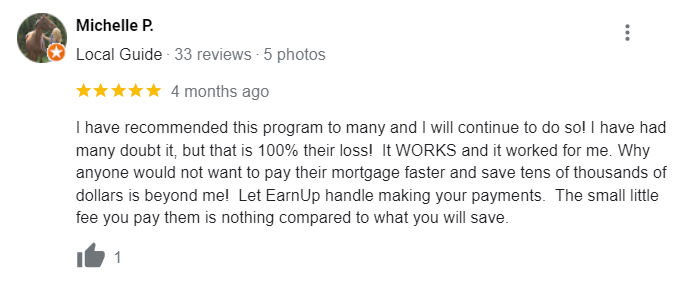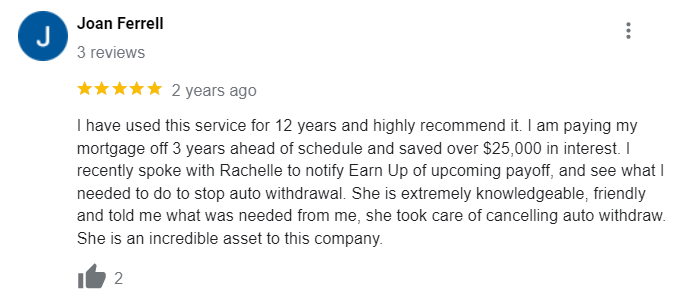Imagine a world where making your mortgage payment is as simple as sending a text. That’s not just fantasy; it’s reality with the innovative text to pay for mortgage.
This groundbreaking technology revolutionizes how borrowers handle their biggest monthly bill, transforming what used to be a tedious task into mere seconds of effort. Who wouldn’t want to streamline one of life’s most significant financial responsibilities?
Studies show that convenience in payment options can significantly boost on-time payments. Text to pay leverages this by providing an ultra-convenient method that fits seamlessly into our smartphone-centric lives. Yet, many are still unaware of how this tech works or its potential benefits. Could something so simple really change the landscape of mortgage payments? Let’s explore how and why every borrower and lender could benefit from adopting text to pay for mortgage.
What Is Text to Pay for Mortgage?
Text to pay for mortgages makes paying your loan as easy as sending a text. This cool feature lets you reply to a message from your lender and boom, payment sent. No more hassle.
With text to pay, mortgage lenders can send a unique payment link to borrowers through SMS. The borrower just needs to click the link to complete their payment using their mobile device. It’s that simple.
How Text to Pay Works
The text to pay process is pretty straightforward. First, the mortgage lender creates an invoice for the borrower’s monthly payment. Then, they copy the unique payment link generated by their text to pay service and include it in a text message to the borrower.
The lender can schedule the message to be sent a few days before the payment due date. When the borrower gets the text, they click the link and follow the steps to complete the payment using their preferred method, like a debit card or bank account.
Benefits of Text to Pay for Mortgage Lenders and Borrowers
Text to pay offers many advantages for both mortgage lenders and borrowers. Lenders benefit from more on-time payments, while borrowers enjoy the ease of a quick and user-friendly way to pay their mortgages.
Text to pay also lets lenders reach mobile-first customers who prefer managing their finances on their smartphones. Borrowers love the flexibility of being able to make their mortgage payments anytime, anywhere, using their mobile device.
Three Reasons Lenders Should Adopt Pay by Text
Why adopt pay by text? Here are three convincing cases.
1. Service Mobile-First Customers
The amount of mobile web traffic has grown steadily over the years, jumping from 31.16 percent of all web traffic in Q1 2015 to 52.6 percent in Q4 2019.
For the mobile-preferred customer, paying by text message is an intuitive process that fits in with their existing habits. It’s an extension of what they already do and what they are already familiar with.
Lending companies can benefit greatly from this trend:
- User Convenience: Text messages provide a high-engagement communication channel that meets consumers where they are, making payments easier and faster.
- Future-Proofing Your Business: Predictions suggest that almost three quarters of the world will exclusively access the internet via their mobile device by 2025 . Optimizing for mobile use ensures you won’t lose customers to competitors who prioritize mobile payments.
2. Reduce Delinquent Payment Rates
Reminders and payment links can encourage your customers to make their payments on time.
Text message reminders may be more effective than email and mail reminders. The average open rate of an email is between 15 and 20 percent. The average open rate of a text message is significantly higher at 99 percent.
Consider the customer’s journey when receiving a one-click-to-pay text message. Because they are not required to input their credentials, they are less likely to opt-out or abandon the payment process, meaning you increase your likelihood of receiving timely payments.
3. Give Customers the Power of Choice
Today, consumers expect a choice. Flexibility is of paramount value, and convenience is a critical factor in modern customer experience design.
By enabling text to pay, you are giving your customers the power of choice. Interested customers can opt-in to receive these texts, while others can continue receiving payment reminders through other methods.
Further, SMS payments give your customers the ability to make payments anywhere, any time. A one-click-to-pay link can be actioned regardless of a user’s current circumstances â whether they are commuting to work, at a weekend brunch, or in line at the grocery store, they can pay a bill in minutes.
Best Practices for Implementing Text to Pay for Mortgage
To make text to pay work smoothly for mortgage payments, it’s good to follow some best practices during the rollout.
Following Mobile Carrier Guidelines
To make sure your text to pay messages get through and don’t end up marked as spam, follow the rules set by mobile carriers. You need clear permission from borrowers before texting them, and always include an easy way for them to opt out.
Using Branded Links
To build trust and boost click-through rates, mortgage lenders should use branded payment links in their text to pay messages. A branded link has the lender’s company name or website domain, so the borrower knows the message is coming from a trusted source.
Sending Follow-Ups Strategically
While follow-up messages can effectively encourage on-time payments, it’s important not to overdo it. Lenders should send follow-ups strategically, spacing them out and limiting the total number of messages. Too many follow-ups can feel spammy and may lead to borrowers opting out of texts altogether.
Monitoring Results
Mortgage lenders can measure how well their text to pay system is working by keeping an eye on important numbers like click-through rates, payment completion rates, and the percentage of payments made on time. Watching these stats over a period helps lenders spot what needs fixing and fine-tune their strategy.
Challenges to Consider with Text to Pay for Mortgage
Although text to pay brings many perks for those involved in mortgages, there are some hurdles that can’t be ignored.
Addressing Delivery Issues
One possible issue with text to pay for mortgage payments is delivery problems. If a borrower’s mobile number is incorrect or no longer in service, the payment link may not be delivered successfully.
To minimize this risk, lenders should regularly verify and update borrower contact information and have a backup plan for borrowers who don’t receive the text message.
Overcoming Customer Suspicion
Borrowers could be suspicious when getting text messages from their mortgage company if they’ve never communicated that way before. Lenders need to explain Text to Pay beforehand, showing how it works and setting expectations clearly.
Using branded payment links and giving borrowers clear opt-out options can build trust, helping them feel confident that the messages they receive are genuine.
Collecting Customers’ Phone Numbers
To successfully implement text to pay, mortgage lenders need accurate mobile phone numbers for their borrowers. Collecting this information can be tricky, particularly for existing borrowers who may not have provided a mobile number when they originally signed up for their mortgage.
Lenders can ask borrowers for their mobile numbers by sending emails or direct mail. This way, they can also highlight the perks of using text to pay.
Why Mortgage Lenders Should Offer Text to Pay
So, why should mortgage lenders start using text to pay? Here are a few strong reasons.
Improving the Payment Experience
Text to Pay can really make life easier for people paying their mortgages. With just a mobile device, borrowers get a hassle-free way to handle payments and keep up with their monthly bills without the usual stress.
By making these improvements, customers are likely to be happier and stick around longer.
Increasing On-Time Payments
Late mortgage payments can hit both borrowers and lenders hard. By using text to pay, lenders offer timely reminders and an easy way for borrowers to make on-time payments.
Studies show that sending text message reminders can boost payment rates, with some companies reporting a 25% rise in on-time payments after using text to pay .
Reaching Mobile-First Customers
Nowadays, people love handling their finances on mobile devices. Mortgage lenders can really connect with these mobile-first customers by using text to pay. These folks often ignore traditional payment reminders sent through email or direct mail.
Text to Pay allows lenders to meet borrowers where they are and communicate with them through their preferred channel.
Automating the Payment Process
Mortgage lenders can save a lot of time with text to pay by automating their payment processes. Instead of handling everything manually, they can rely on automated reminders and follow-ups. This helps streamline collections efforts so staff members have more time for other important duties.
This kind of automation makes sure payments are always handled the same way, reducing human errors along the way.
Key Takeaway:
Text to Pay for mortgage simplifies payments by letting borrowers pay via a text link. Lenders can send automated payment reminders and follow-ups, boosting on-time payments. It’s convenient for mobile-first customers, builds trust with branded links, and saves time through automation.
Conclusion
So, what have we learned about text to pay for Mortgage? It’s not just a payment method; it’s your financial assistant on-the-go. This handy tool doesn’t just collect payments; it revolutionizes the way mortgage lenders connect with borrowers.
From easy setup to ensuring timely payments, text to pay empowers both lenders and borrowers by simplifying transactions through a medium everyone uses daily—text messages. Think about how smooth your life gets when you can manage something as significant as mortgage payments right from your smartphone.
This isn’t just about making things easier—it’s turning the mundane into something special. Lenders who jump on this tech-savvy trend find their borrowers enjoying newfound simplicity and dependability.
We’ve ditched old-school methods and entered a time where mobile-first solutions lead the way. Embracing this shift is crucial because adding Text to Pay doesn’t just make things easier for users—it sets up a strategy that matches customer expectations and keeps up with tech trends.
I’m excited for you all exploring these possibilities within the realms of mortgage lending! Let’s keep pushing boundaries together!
FAQs in Relation to Text to Pay for Mortgage
How do you do text to pay?
You send a payment link via SMS. The customer clicks it and completes the transaction on their phone.
How to ask for payment via text?
Keep it short: “Hi, your mortgage payment is due. Please use this link \[link\] to complete your payment.”
How does text to pay work?
A unique link gets sent in an SMS. The recipient taps the link and follows prompts to make payments.










